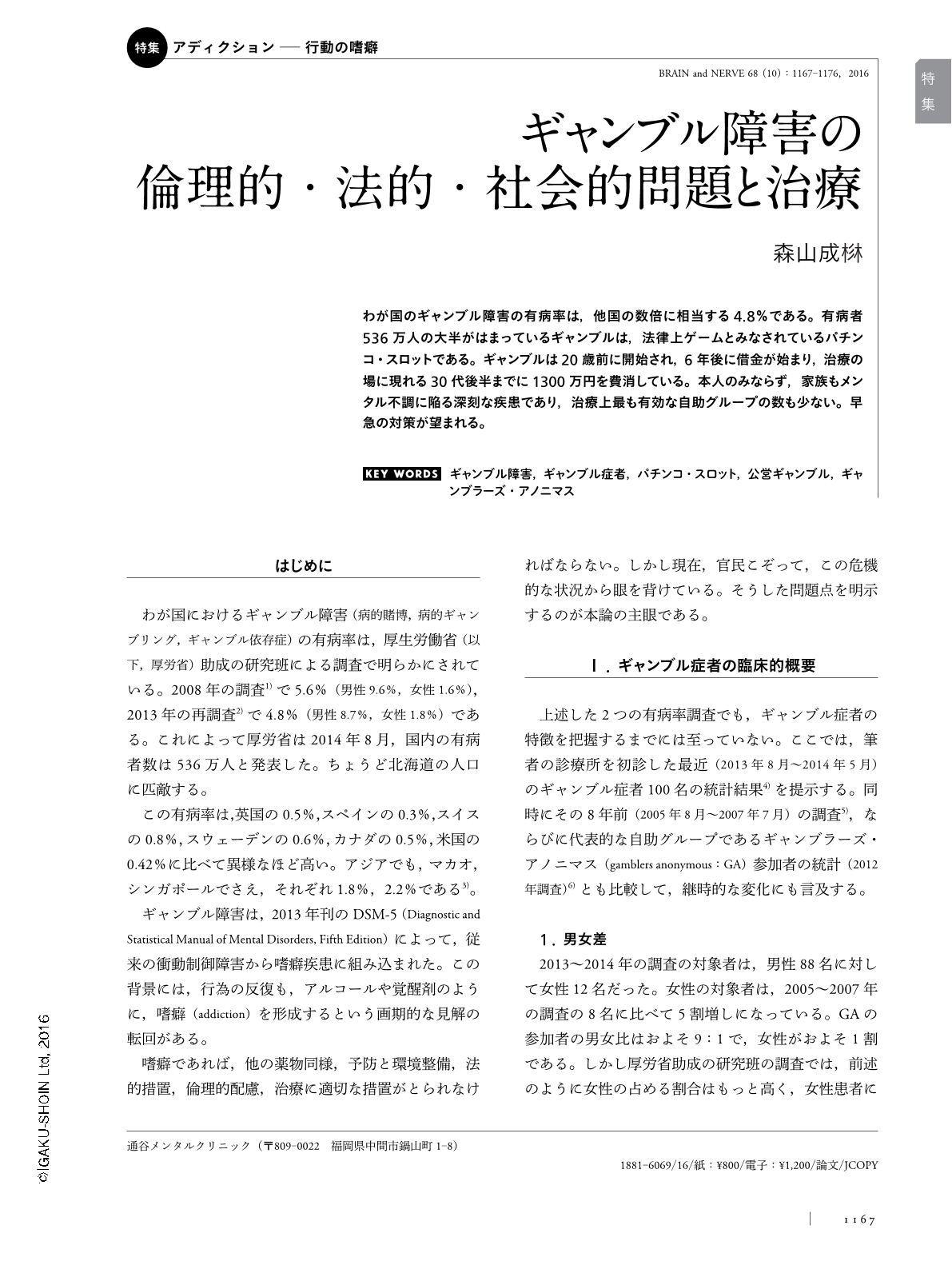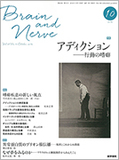Japanese
English
- 有料閲覧
- Abstract 文献概要
- 1ページ目 Look Inside
- 参考文献 Reference
わが国のギャンブル障害の有病率は,他国の数倍に相当する4.8%である。有病者536万人の大半がはまっているギャンブルは,法律上ゲームとみなされているパチンコ・スロットである。ギャンブルは20歳前に開始され,6年後に借金が始まり,治療の場に現れる30代後半までに1300万円を費消している。本人のみならず,家族もメンタル不調に陥る深刻な疾患であり,治療上最も有効な自助グループの数も少ない。早急の対策が望まれる。
Abstract
Recently, the Ministry of Health, Labor and Welfare estimated the prevalence rate of gambling disorder to be 4.8 percent of the population. This rate is outstandingly higher than other countries with prevalence rates between 0.25 and 2.0 percent. It is also estimated that no fewer than 5 million Japanese suffer from the disease. In the last two years, 100 new patients visited the author's clinic. On an average, they started gambling at the age of 19.7 years, and incurring debt at the age of 25.8 years. They first visited the clinic at an average age of 38.2 years, and the average amount they had spent on gambling up to that point was 13 million yen. Twenty percent of them had taken some legal measures to reduce their burden from debts before seeking treatment. Sixty percent of pathological gamblers exclusively played pachinko and slot machine games. Patients who did not play on such machines accounted for no less than 2 percent of cases. This is not surprising, considering the fact that Japan has nearly 4.6 million pachinko and slot machines, which account for two thirds of the total electric gaming machines in the world. Japanese legislation does not regard pachinko and slot machines as gambling, but merely as gaming. Therefore, pachinko companies have no restrictions as such to promote their market. They can advertise freely in newspapers and TV commercials. Pachinko halls are filled with lighting, sounds, and visual effects to stimulate and excite gamblers. The harmful effects of gambling disorder include depression, loss of employment and friends, marital discord, fraud, embezzlement, theft in the family, and theft from non-family members. The most helpful therapy involves attending self-help group sessions at least once a week. One of the best-known self-help groups is Gamblers Anonymous (GA); there are 162 GA groups in Japan. The author believes there should be one GA group for every city across the nation. Unfortunately, psychiatrists, who should be taking the lead in providing diagnosis and treatment, are showing little interest in gambling problems. Unless all psychiatrists develop the ability to deal with the disease effectively, there is little hope for patients and families to see a light at the end of the tunnel. It is also time for the administration to implement necessary measures instead of averting its eyes from the harsh reality and promoting publicly managed gambling. Considering the miserable situation, the administration should not lift its ban on the casino industry.

Copyright © 2016, Igaku-Shoin Ltd. All rights reserved.


